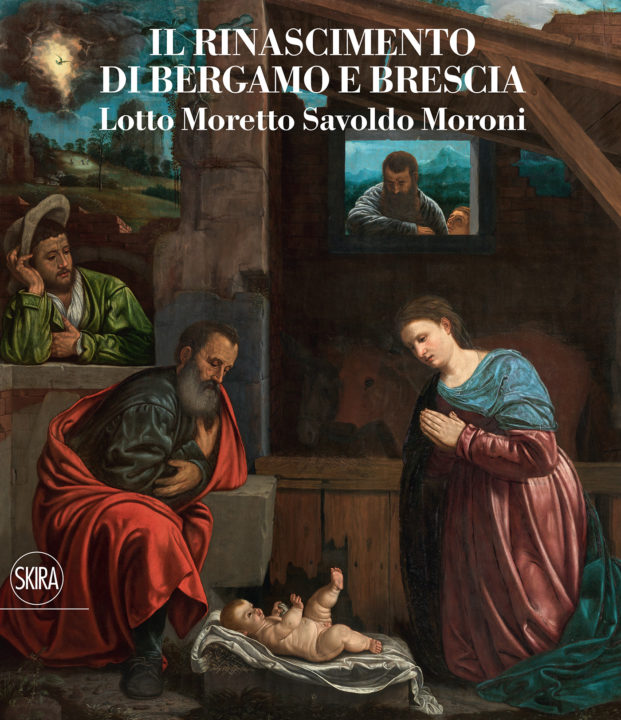Il Rinascimento di Bergamo e Brescia. Lotto Moretto Savoldo Moroni
Edited by Simone Facchinetti e Francesco Frangi
Skira Editore
In the traditional Christmas appointment in Milan, at Palazzo Marino, within the exhibition Il Rinascimento di Bergamo e Brescia. Lotto Moretto Savoldo Moroni, the collection of the Tosio Martinengo Picture Gallery is represented by two of its greatest exponents Alessandro Bonvicino called Moretto (1498 – 1554) with St. Nicholas of Bari presents Galeazzo Rovellio’s students to the enthroned Virgin and Child (Rovellio altarpiece) and Giovan Girolamo Savoldo (1480 – 1540) with Adoration of the Shepherds.

A celebration of the artwork of the great Renaissance masters from Brescia and Bergamo who gave life to one of the highest expressions of Italian Renaissance art.
The companion volume to the exhibition displaying to Palazzo Marino in Milan focuses on two cities that in the Renaissance period saw the birth of original artistic civilizations. In spite of the fact that Bergamo and Brescia were both under the dominion of the Serenissima, their main painters have developed a different, autonomous language, marked by a lively attention to truth and nature.
These painters of the 16th century are authors of primary magnitude: Moretto, Savoldo, Moroni, with the addition of the Venetian Lorenzo Lotto, documented through a masterpiece of his Bergamo season. Four works are presented: the Mystic Marriage of Saint Catherine by Giovanni Battista Moroni at Brera Art Gallery, the Mystical Marriage of St Catherine of Alexandria with Niccoló Bonghi by Lorenzo Lotto, loan from the Accademia Carrara in Bergamo and coming from the Tosio Martinengo Picture Gallery of Brescia, the Adoration of the Shepherds by Giovan Girolamo Savoldo and the Rovellio altarpiece by Alessandro Bonvicino called Moretto.
These are works of great impact, which well represent the originality of the Renaissance of Bergamo and Brescia in which local and Milanese influences found expression and synthesis, alongside the Venetian and Roman-Florentine. Focused on the theme of the Nativity and the Madonna and Child, these four artworks dialogue with each other for the unprecedented immediacy of the scenes, the vibrant realism of the characters and the study of chiaroscuro effects. All ingredients that will be inherited and taken to the extreme consequences, at the end of the century, by Caravaggio.
